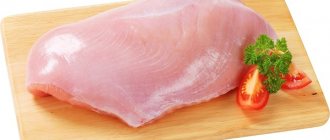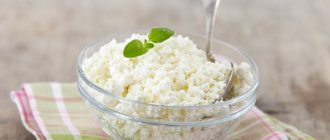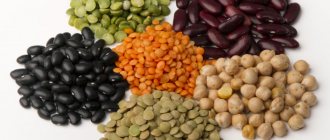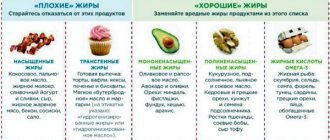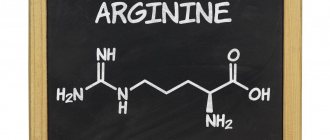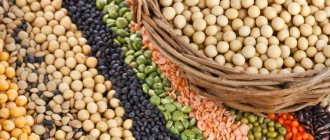Foods with a lot of protein for bodybuilding
If you decide to engage in bodybuilding, then in addition to training, it is very important to eat right. The mistake of many is that they do not think about their nutrition, so the results even after intensive training are not as high as they would like. Therefore, for all those who want to gain muscle mass rather than fat, it is very important to include foods with high protein in their diet. This will help you build a beautiful body.
To do this you should eat:
All types of meat, this can include beef, rabbit, various types of poultry, lamb and a small amount of pork. It is advisable to choose lean meat without fat content.
It is also very good to include seafood in your daily diet. If you choose fruits and vegetables, you can get a good amount of protein here, but be sure to remember that this category can contain large amounts of carbohydrates, such as potatoes.
You can build your menu based on the following vegetables and fruits, as well as legumes:
- Spinach
- Soy asparagus
- Soybeans
- Beans
- Banana
- Avocado
Why is protein so important?
When it enters the body in one form or another, the protein is broken down into amino acids, which perform the following functions:
- Building muscle mass;
- Cell restoration;
- Nourishes hair, skin and nails.
Protein is certainly important for adults, especially professional athletes who need smooth muscle function. It is also necessary for those losing weight to speed up metabolism. But most of all, children whose bodies grow daily, and therefore require protein elements, need building components.
Daily norm
Fortunately, the habit of healthy lifestyle practitioners of counting calories and the amount of certain microelements eaten per day is becoming a thing of the past.
Those. If your menu includes the dishes we'll talk about below, you don't have to worry about grams. The main thing is to know which foods contain a lot of protein and replenish your refrigerator with them.
For those who are accustomed to breaking down the contents of the plate into atoms and molecules, I will say that every day we need to eat 0.8 g of protein per kg of body weight. Based on this, we can derive an example: if your weight is 55 kg, your daily menu should contain 44 g of protein products.
However, these numbers are approximate and depend on your lifestyle. Active people who always run need a little more, people with a sedentary lifestyle need a little less.
But don’t think that eating one steak at dinner will cover this figure. The body will take exactly as much protein as it needs right now. Experts agree that the maximum we can take is no more than 30 g of protein in one sitting. It is better to distribute it evenly between all meals, so it will be better absorbed, which means it will bring many times more benefits.
One typical serving size is:
- 100 g lean boneless meat (red and poultry)
- 140 g fish
- 2 medium eggs
- 3 tablespoons seeds or nuts.
It's important to choose low-fat foods, such as lean meats or low-fat dairy, as some high-protein foods can also be high in saturated fat. This will help minimize the risk of developing cardiovascular diseases.
Adviсe
It is very important for humans to consume proteins of plant and animal origin. When playing sports, women should include 1.5 grams of protein per kilogram of their body in their diet, men 2 grams. It is worth knowing and remembering:
- Animal proteins can be called the most complete. They contain all the amino acids necessary for full life. Animal proteins include: all types of meat, poultry, fish, cheese, milk and dairy products, eggs
- Protein in vegetables, fruits, grains and nuts are considered incomplete. They most often lack some amino acids that work to create protein in a new format. Therefore, the body must break down individual amino acids in order to combine them with amino acids from other foods to create building material
- It is advisable to always read what is written on the label and read how much protein the food contains; the ideal option would be if there is more protein than fat content
- Animal protein can be replaced with soy. Soybeans can be an excellent alternative to meat. To do this, you can include tofu or soybeans in your diet.
- Foods with a complete protein content control appetite very well and provide long-lasting satiety, which is good for those
Top 10 foods by protein content
Determining which foods contain a lot of protein is not difficult. Information about the amount of the substance is written on the packaging or in the corresponding tables on the Internet.
No. 1. Soybeans
Familiar to vegetarians and vegans, it contains up to 35% plant protein. It turns into a variety of dishes and does not let you get bored while on a diet. Soybeans are used to create sausages, milk, bread flour, tofu cheese, sauces, and desserts. You just need to study the cooking technology and stock up on spices.
No. 2. Hard cheese
Various varieties of hard cheeses provide 22-30% protein per serving.
The product is rich in essential amino acids, calcium, and vitamins. Cheese improves your mood while on a diet and quickly fills you up. The bad thing is that it is high in fat and caloric content - you can hardly afford more than 30-40 g per day.
No. 3. Peanut
Groundnuts provide up to 26 g of protein.
The protein in this legume is considered optimal in terms of the set of amino acids and is well absorbed. You can eat peanuts on a diet in the form of a paste, an ingredient in healthy baked goods, or a snack, just like real nuts.
No. 4. Peas and beans
Number four on the list, titled “What Foods Are High in Protein?” occupied by other legumes.
Per 100 g of peas there are 23 g of vegetable protein, beans - 22. The products are used to prepare soups, purees, salads, cutlets, and flour. This is an excellent alternative to potatoes - they fill you up just as well and do no harm.
No. 5. Turkey meat
Turkey fillet is superior in protein content to chicken.
Meat of the second category consists of 22% peptides, the first - 19.5. It is considered easily digestible. The body will receive up to 95% of the protein contained in the bird. The meat is dietary, quickly fills you up and prevents you from overeating.
No. 6. Rabbit meat
In terms of nutritional value, turkey meat is second only to rabbit meat.
One hundred grams of raw rabbit meat is comparable in energy value to 50 g of dry buckwheat. A full meal with rabbit meat, a complex side dish and salad will fill you up for the next 4-5 hours, and the animal’s muscle tissue will bring up to 21 g of protein.
No. 7. Chicken meat
The first category of poultry gives a person 18 grams of protein, the second - 20.8.
The product is good due to its availability and affordable price. But the energy value of turkey and rabbit meat is almost 1.5 times higher. When creating a diet with strict calorie restrictions, it makes sense to abandon chicken fillet in favor of more dietary meat.
No. 8. Beef
To provide the body with essential amino acids, lean beef will have to be consumed 2-3 times a week. Red meat of the first category includes 18.6% protein, the second – 20%. The product is rich in iron, zinc and vitamin B12.
To save money, beef can be replaced with beef liver. The latter contains 17.9% protein, and the offal costs 2-3 times less.
No. 9. Fish and seafood
Almost any fish is suitable: white fish like pollock is cheap, red fish contains essential fatty acids, and seafood is low in calories.
The protein from such meat is absorbed by 90-95%. The record holders for protein content per 100 g are:
- Atlantic herring – 19;
- pike perch – 18.4;
- sea bass – 18.2;
- squid – 18;
- carp and cod – 16;
- pollock – 15.
If it is not possible to purchase fresh or frozen fish, you can be content with canned fish. Tuna and pink salmon in their own juice are as healthy as freshly cooked salmon and are cheaper.
No. 10. Cottage cheese
The largest amount of protein comes from low-fat cottage cheese. The substance represents 18-22% of the weight of the product.
Low-fat cottage cheese has a low energy value, good protein digestibility and a long list of useful elements in its composition. The product partially or completely satisfies the body’s daily need for calcium, phosphorus, iron, vitamins A, B, C. And you can make breakfast, lunch, dinner, and snacks from cottage cheese - the ingredient is eaten in salty and sweet form, combined with cereals , vegetables, fruits and bread.
Vegetarianism
Many people are interested in whether it is possible to be a vegetarian and get complete protein. Of course, there is such a possibility, to do this you just need to know what products will help with this.
- Quinoa. It is an excellent source of protein with a complete composition of amino acids. It can be consumed by everyone, even non-vegetarians.
- Black beans. It is these legumes that can fully replace meat in the human body, so in order to fully replenish protein in the body, it is worth eating beans. It is also rich in fiber and antioxidants.
- In fifty pistachios you can find six grams of protein. Therefore, pistachios are also good for snacks or as an addition to dishes.
- Lentils should be on the table of all vegetarians, because they have no equal in the amount of protein that is suitable for adherents of this diet. 9 grams per half cup, it turns out that a glass of lentils can, if possible, replace almost a hundred grams of beef.
- Almond. These nuts contain about 6 grams of protein per handful.
- Soy milk. This product gives rise to a lot of controversy, but it contains enough protein, 8 grams per glass. Why do they argue, it’s simply believed that in our time soybean is a geno - a modified product, therefore everyone decides for themselves whether to eat it or not.
- Broccoli. This vegetable is low in calories and is a good source of protein. A glass contains about 4 grams of protein.
What foods contain a lot of protein? Tables!
Good day everyone, friends! Glad to see you on my website about Natural Bodybuilding! In this post I want to touch on the topic of which foods contain a lot of protein. Let’s figure out how much protein an athlete involved in bodybuilding needs to consume, and I’ll give you a table to help you with a list of foods high in protein.
Why does a bodybuilder need protein, and how much? The right approach!

The constant question in bodybuilding, about how much the final result in this sport depends on protein intake, in my opinion, does not allow them to sleep peacefully. I am not a supporter of worrying about all these topics, since I do not strive to achieve any titles.
But sometimes I still turn to this type of information to confirm the correctness of my decision in choosing certain products for a certain period in my training.
Protein is made up of amino acids, the building blocks of which we ultimately gain muscle mass. There are 22 such amino acids in nature, of which 8 are essential, which we need and we can only get them by taking food and sports supplements. The body simply does not synthesize them on its own.
Protein is needed to maintain the vital functions of our body. For the most part, this applies to athletes, especially those who engage in strength training, i.e. you and me. Physical activity with iron enhances the natural process of breakdown (catabolism) in muscle tissue, hence the need for building materials, amino acids, increases. I think this is understandable.
On the topic of how much protein to consume, well, there are a lot of different nuances on which the absorption of protein by the body directly depends. I won’t dive into scientific explanations, in order to distract from the main thing, I’ll just give the numbers that many athletes, nutritionists and scientific minds adhere to and recommend.
The average amount of protein per day is recommended to be calculated at the rate of 2 grams per kg of human weight. I advise you to take 20-30 grams slightly lower than these figures, because... all your money spent on this will be seen in the toilet. It is a fact.
Now about how much protein there should be in one serving. Opinions are like people, but the latest reliable facts, which you can find on the Internet, say that you should not consume more than 20-25 grams of protein at one time. And I am a supporter of this scientifically proven approach.
Table of the body's daily protein needs:
| Age, other features | Daily dose, g/kg body weight |
| 0–3 years | 1,1–1,5 |
| 4–13 years | 0,95 |
| 14–18 years old | 0,85 |
| Healthy adults | 0,8 |
| Pregnancy, lactation | 1,1–1,3 |
| Athletes, strength sports | 1,7–2,5 |
List of all nonessential and essential amino acids! Know this KACH!
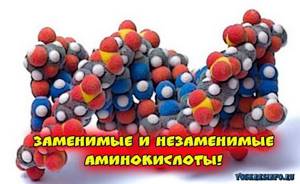
Essential - 8: isoleucine, leucine, lysine, methionine, phenylalanine, threonine, tryptophan and valine.
Nonessential - 14: glutamine, taurine, alanine, arginine, ornithine, glycine, tyrosine, carnitine, proline, asparagine, serine, histidine, cystine, cysteine.
But I think that you don’t really need to go deep into studying all this, just exercise, have a smart approach to nutrition and get enough rest. This, in my opinion, is what a natural person needs to understand in approaching their training. I won’t bother you with scientific facts, I’ll just say one thing: keep it simple, because everything ingenious is simple. The simpler the better.
Table of foods with different protein contents! Study it!
Still, I don’t want to bother you much at the end, take this into account. Remember that a lack of protein in humans can cause disruption of the endocrine glands. It may also weaken the immune system and decrease stamina, change the composition of the blood and weaken the work of the brain center.
Well, that's all for today. I think this post was useful to those who are looking for an answer to the question, what foods contain a lot of protein? If anyone has any questions, please ask, I will try to answer. Good luck with your training and good progress!
List of foods with lower amounts of proteins
| Product | Protein in grams per 100g | Product | Protein in grams per 100g |
| apricot | 1 | caramel | 0 |
| a pineapple | 0,5 | potato | 1,9 |
| peanut | 26,5 | strawberry | 1,4 |
| watermelon | 0,6 | cranberry | 0,7 |
| beans | 5,9 | Buckwheat | 13 |
| eggplant | 0,7 | Semolina | 11,5 |
| waffles | 3,1 | Oat groats | 12,5 |
| ham | 23 | Corn grits | 9 |
| cherry | 1,6 | Wheat groats | 12,8 |
| grape | 1,1 | Pearl barley | 9,6 |
| Hercules | 13,5 | lemon | 1 |
| peas | 23,2 | Onion turnip | 1,9 |
| Walnut | 13,9 | Green onion | 1,5 |
| Boletus mushrooms | 2,5 | mayonnaise | 3,5 |
| Porcini mushrooms | 27,8 | dried apricots | 5 |
| pear | 2,5 | margarine | 1 |
| Green bean | 4,1 | marmalade | 0 |
| marshmallows | 1 | Vegetable oil | 0 |
| raisin | 2,4 | Butter | 0,7 |
| zucchini | 0,8 | honey | 0,9 |
| White cabbage | 2 | almond | 19 |
| Wheat flour 1st grade | 11 | persimmon | 0,6 |
| Wheat flour 2nd grade | 12 | wild garlic | 2,5 |
| cucumbers | 1 | blueberry | 1,3 |
| olives | 5,5 | cherries | 1,2 |
| paste | 0,6 | garlic | 6,6 |
| Bulgarian pepper | 1,5 | lentils | 25 |
| parsley | 2,5 | rose hip | 3 |
| tomatoes | 1,1 | Milk chocolate | 7 |
| gingerbread | 5,2 | Dark chocolate | 5,5 |
| radish | 2 | salo | 1,5 |
| rice | 8,2 | spinach | 3 |
| Rowan | 1,3 | apples | 0,5 |
| salad | 1,3 | drying | 10,5 |
| sunflower seed | 21 | beans | 23 |
| baking | 8,2 | hazelnut | 15,9 |
| soybeans | 35 | halva | 12 |
Protein in food. Protein sources
Proteins (proteins) are the main element of any biological life on our planet.
This is a very diverse compound in structure and species specificity - a polymer based on carbon, nitrogen, hydrogen, oxygen and other elements. Creating your own specific proteins is the most important function of all living beings. The human body contains about 25 kilograms of protein. Every day, about 400 grams of this protein undergo breakdown and the same amount is synthesized anew. On average, all proteins in our body are renewed in 80 days. At the same time, the rate of protein renewal in different tissues is different. For example, muscle proteins are renewed every 180 days, liver proteins every 10 days, etc. If we take into account the daily loss of nitrogen in the absence of protein in food, then we can calculate the amount of protein that is finally destroyed every day. This value is called the Rubner wear coefficient and is about 23 g of protein per day.
Proteins are part of all the tissues of our body and even the tissue of bones and teeth. The structure of protein is based on amino acids connected in different sequences and combinations. The order of connection and further packaging (multidimensional folding) of a long molecule is determined in the hereditary information base - DNA.
In order for us (like all other living organisms) to create protein, we need its building blocks - amino acids. All proteins have their own species specificity - they differ from each other, therefore proteins obtained from food are first broken down into amino acids. We then build our own proteins from them. Basically, the synthesis of most types of protein requires the presence of 20 essential amino acids.
Regular green plants synthesize amino acids from carbon dioxide, water and nitrogen with the help of chlorophyll. Then, based on them, plants build their own proteins. In animals and humans, amino acids can be produced from other amino acids during metabolism, or created on the basis of other compounds. However, there are amino acids that we cannot create on our own and must be obtained in finished form, as part of the proteins contained in food. These amino acids are called "essential". Some of the amino acids are synthesized in our body, but the starting points for this are essential amino acids, so they are classified as “conditionally essential”.
The usefulness of products - sources of proteins (proteins) is precisely determined by the presence of essential amino acids and the possibility of their absorption. If a protein contains all the essential amino acids, then it is considered a complete protein. Thus, food containing even large amounts of protein may be incomplete if these proteins lack at least one essential amino acid.
An “ideal protein” (for humans) should contain the following proportions of essential amino acids:
table. The ratio of essential amino acids in an ideal protein for humans
| Amino acid | milligrams per gram of ideal protein |
| Isoleucine | 40 |
| Leucine | 70 |
| Lysine | 55 |
| Methionine and Cystine | 35 |
| Phenylalanine and tyrosine | 60 |
| Tryptophan | 10 |
| Threonine | 40 |
| Valin | 50 |
The most complete protein composition is found in products of animal origin - meat and meat products, milk and dairy products, eggs and caviar, and seafood. Typically, their composition includes the entire set of nonessential, essential, and conditionally essential amino acids. The protein content of meat, milk or eggs ranges from 100% of egg white or whey protein to 75% of pork or beef protein. Not all animal proteins are complete. For example, the protein of skin, bones and connective tissue does not contain a complete set of essential amino acids and is classified as incomplete.
Plant foods also contain protein, but in smaller quantities and not as complete. The completeness of plant proteins varies from 75% for soybean proteins to 50% for peanut proteins. The main amount of protein in plants is contained in the seeds.
Inferiority of vegetable protein can be easily overcome by combining various starting products. With such combined dishes, the lack of essential amino acids in one of them will be compensated by the presence in the other. Based on this, people who adhere to vegetarian dietary principles are recommended to diversify their diet as much as possible.
The speed and ability to digest food proteins depends on their structure and varies in different foods. The structure of the protein also changes depending on its cooking. Thus, meat cooked in different ways, as well as fried or baked, will have different degrees of digestibility. This especially applies to some herbal products. Some of them can be absorbed only after preliminary heat treatment. Pre-processing grains and legumes also reduces the presence of certain unwanted proteins (lectins) that require monitoring in some people who are sensitive to them. Also, in addition to proteins (proteins), products contain other organic and inorganic compounds that affect their usefulness and digestibility, as well as the ability to regulate biochemical processes in the body after they are digested.
Our body cannot store amino acids obtained from food as a reserve, therefore, amino acids not used for the construction of its own proteins are subject to disassembly in the liver (deamination). As a result of the deamination of amino acids, ammonia (NH3) is formed, which can either be used to build new amino acids or other compounds we need, or removed from the body in the form of urea, and other important products - fatty acids, precursors of ketone bodies and glucose. Thus, when receiving a large amount of proteins (especially incomplete ones) from food, the excess amount of amino acids can be used for the synthesis of energy compounds - lipids (fats), glycogen.
However, there is a mechanism that allows you to smooth out periods of lack or absence of complete protein in the diet. This reserve is the supply of a special protein albumin circulating in the blood. It is synthesized in the liver from amino acids obtained from food and can subsequently be used during periods of insufficient or inadequate protein nutrition. The total amount of albumin in the blood of an adult is 35–55 g per 1 liter of blood. With a complete protein diet, its average synthesis rate is about 10 - 18 g per day.
This protein performs many important functions in our body, so it cannot be used completely. A decrease in its level below 30 g per 1 liter of blood is undesirable and is accompanied by edema and an increase in lipid levels in the blood. The circulation time of albumin to its half-life is approximately 17 days.
Based on this, it is not necessary to strictly control the presence of all essential amino acids in one meal. It is enough to combine different products throughout the day to complement the desired properties of each of them. Moreover, the digestion process is not instantaneous, but can take up to 7-8 hours, depending on the type of food. Thus, the nutrition plan should be based on the correct system for calculating the daily diet, taking into account all the individual characteristics of each person.
Daily value of protein in the human diet
A person's daily protein intake depends on many factors. During the period of growth and development, as well as for women during pregnancy or breastfeeding, the daily amount of protein should be increased in relation to the average person leading a normal lifestyle. It is also believed that during physical activity a person requires an increased amount of protein and, accordingly, amino acids. Despite the fact that during physical work, protein metabolism in muscles is indeed significantly activated, it must be understood that muscles do not “burn” protein as a source of energy. To do this, they use primarily carbohydrates.
Daily protein intake based on WHO recommendations
A safe norm is at least 0.8 grams of protein per kilogram of weight. This is provided for a healthy average person of middle age (over 18 years old) not engaged in heavy physical labor. At the same time, half of the consumed proteins should be represented by proteins of animal origin. Thus, a person weighing 70 kg should consume about 60 grams of protein per day. Please note that we are talking about the amount of protein, and not the product containing protein. The amount of protein in staple foods is shown in the table below.
Table of protein content in food.
the content of components is indicated in grams per 100 g of product and the total calorie content
Product containing protein | Quantity of protein | Amount of fat | Number of carbohydrates | Calorie content of the product Kcal |
| Meat, offal, egg | ||||
| Mutton | 24 | 25 | — | 300 |
| Lean lamb | 21 | 9 | — | 166 |
| Beef lean | 20,2 | 7 | — | 168 |
| Beef (minced meat) | 23 | 15,2 | — | 220 |
| Goose | 29 | 22 | — | 319 |
| Turkey (lean) | 24 | 7 | — | 165 |
| Rabbit, hare | 24 | 9 | — | 181 |
| Chicken (without skin) | 25 | 6 | — | 150 |
| Chickens (broilers) | 22,6 | 8,3 | 0,5 | 158 |
| Chicken liver (broil) | 18-21 | 3-10 | 2 | 135 |
| Chicken heart (broil) | 15-22 | 7-10 | 1 | 150 |
| Chicken stomachs | 20-22 | 4-7 | — | 136 |
| Beef brains | 11 | 8,6 | — | 124 |
| Lamb liver | 19 | 3 | — | 100 |
| Beef liver | 17 | 3 | — | 100 |
| Pork liver | 18 | 3.6 | — | 110 |
| Lamb kidneys | 12,5 | 3 | — | 80 |
| Beef kidneys | 12.5 | 2 | — | 70 |
| Pork kidneys | 14 | 3 | — | 92 |
| Pork is fatty | 19 | 50 | — | 332 |
| Pork lean | 25 | 28 | — | 226 |
| Fatty veal | 20 | 8 | — | 148 |
| Skinny veal | 22 | 1 | — | 89 |
| Duck | 17,6 | 26,6 | — | 313 |
| Lamb heart | 14 | 2.5 | — | 75 |
| Beef heart | 15 | 3.0 | — | 85 |
| Pork heart | 15 | 3.5 | — | 90 |
| Sausages | 10-20 | 11-35 | 1-4,2 | Up to 420 |
| Beef tongue | 16 | 12 | — | 173 |
| Whole chicken egg 1 piece - 50 g | 6,7 | 12 | 0,6 | 75 |
| Egg, yolk (1 pc.) | 2,7 | 5,2 | 0,1 | 59 |
| Egg, white (1 pc.) | 3,9 | — | 0,3 | 17 |
| Fish and seafood | ||||
| Beluga | 24 | 4 | — | 131 |
| Pink salmon | 21 | 7 | — | 147 |
| Chum salmon caviar | 27 | 13,4 | — | 261 |
| Squid fillet) | 18,0 | 2,2 | — | 75 |
| Flounder | 18,2 | 2,3 | — | 105 |
| Sea kale | 1,7 | 0,6 | 3,6 | 11 |
| Carp | 19,9 | 1,4 | — | 95 |
| Mullet | 21,4 | 4,3 | — | 85 |
| Crabs | 18,7 | 1 | 0,1 | 85 |
| Shrimps | 20 | 1,8 | — | 95 |
| Icy | 17,4 | 3 | — | 98 |
| Bream | 21 | 4,7 | — | 126 |
| Macrurus | 15,3 | 1 | — | 68 |
| Pollock | 17 | 1 | — | 75 |
| Lamprey | 15 | 12 | — | 165 |
| Sea bass | 20 | 3,6 | — | 112 |
| Sturgeon | 16.5 | 11 | — | 163 |
| Cod liver | 24 | 66 | — | 613 |
| Blue whiting | 17,9 | 1 | — | 81 |
| Saber fish | 20 | 3.2 | — | 110 |
| Saira | 18.6 | 12 | — | 182 |
| Salaka | 18,0 | 7 | — | 133 |
| Sardine | 23,7 | 28,3 | — | 188 |
| Herring | 15,5 | 8,7 | — | 140 |
| Salmon | 16,3 | 10,5 | — | 160 |
| Smoked salmon | 25,4 | 4,5 | — | 142 |
| Whitefish | 19 | 7.5 | — | 143 |
| Mackerel | 18 | 13,2 | — | 191 |
| Horse mackerel | 18.5 | 5 | — | 119 |
| Sterlet | 17 | 6 | — | 122 |
| Som | 17 | 8.5 | — | 143 |
| Zander | 21 | 1,3 | — | 97 |
| Trepang | 7.0 | 1 | — | 37 |
| Cod | 17 | 0,7 | — | 76 |
| Smoked cod | 23,5 | 1 | — | 111 |
| Tuna | 23 | 1 | — | 101 |
| coal fish | 14 | 11 | — | 157 |
| Acne | 17 | 32 | — | 320 |
| Oysters | 14 | 3 | — | 95 |
| Trout | 15,5 | 3 | — | 89 |
| Hake | 16,6 | 2,2 | — | 86 |
| Pike | 18 | 0,5 | — | 78 |
| Ide | 18.2 | 1 | — | 81 |
| Milk and dairy products | ||||
| Brynza | 18 | 20,1 | 0 | 260 |
| Kefir (yogurt) 0.1-1% | 3 | 0,1-1,0 | 4 | 30 |
| Milk 0.1-1% | 3 | 0,1-1,0 | 0,2 | 5,1 |
| Milk 1.5-5% | 3 | 1,5-5,0 | 4,8 | 60 |
| Buttermilk | 3,3 | 1,0 | 3,9 | 39 |
| Cream | 2,8 | 20 | 3,7 | 206 |
| Sour cream | 1,5 | 48,2 | 2 | 447 |
| Hard cheeses (medium) | 20-30 | 25-35 | Up to 4 | 300 |
| Dutch | 26,0 | 26,8 | 1 | 352 |
| Kostroma | 25,2 | 26,3 | 1 | 345 |
| Poshekhonsky | 26,0 | 26,5 | 1 | 350 |
| Lithuanian | 29,0 | 15,0 | 1 | 258 |
| Smoked sausage | 23,0 | 19,0 | 2 | 270 |
| Processed cheese | 20 | 20 | 3,8 | 271 |
| Cottage cheese 0.6% | 16 | 0,6 | 1,6 | 88 |
| Cottage cheese 20% | 14 | 4 | 1,2 | 96 |
The fat content of cheeses is shown as the content in the finished product. The corresponding figure in dry matter will be significantly higher.
For weight loss
Such food is very good for weight loss, you just need to choose the right ingredients containing protein that will help you lose weight and not harm your health, and also in which the protein will be more easily digestible.
These include:
- Skinless chicken breast, the most wonderful ingredient, containing a decent amount of protein and almost no fat
- Chicken egg. It is the proteins that bring great benefits, but the yolk helps to absorb the protein much better
- Salmon, in addition to being high in protein, can provide very important Omega fats
- Beef is the one that can provide the most complete protein, which contains the entire set of amino acids
Harm from protein foods
As you know, fats, carbohydrates, and proteins can be harmful to the human body if consumed in excess. Therefore, harm to the body can only be caused if excess protein is formed in the body. This is due to the fact that only the required protein is easily absorbed by the body. The remainder must be processed. This process requires the participation of calcium. If there is not enough of it in the body, it will be drawn from the bones. Constantly exceeding the protein norm can lead to a number of unpleasant diseases. For example, to osteoporosis.
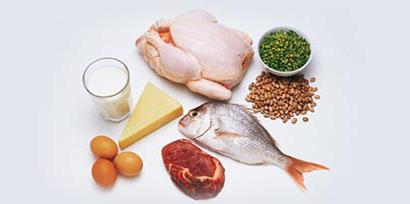
It is very important to study the composition of proteins in foods for another reason. Their excess leads to extra stress on the kidneys. When consuming foods high in animal protein, it is worth remembering that along with it cholesterol enters the body, which has a detrimental effect on the human body.
In order to avoid all the above side effects, you need to add proteins to your diet depending on the needs of your body. It is worth paying attention to the total calorie content of a product containing a lot of protein. It is found in large quantities in meat products, eggs, cheese and cottage cheese, cereals and some other products.
Pros and cons of a protein diet
Despite the possibility of losing weight with protein foods, such a nutritional system has its positive and negative sides. The advantages of this method include the following points:
- Fast and effective results.
- If all the rules are followed, the feeling of hunger should not torment a person losing weight.
- The consumption of almost all products is allowed, but in small quantities.
On the other hand, the disadvantages of this method include:
- Good results can be obtained by doing physical exercises.
- Not suitable for people who do not consume meat or other animal products.
- It is well known which foods contain a lot of proteins, but often they are low in other important elements, so you need to take multivitamin complexes separately.



